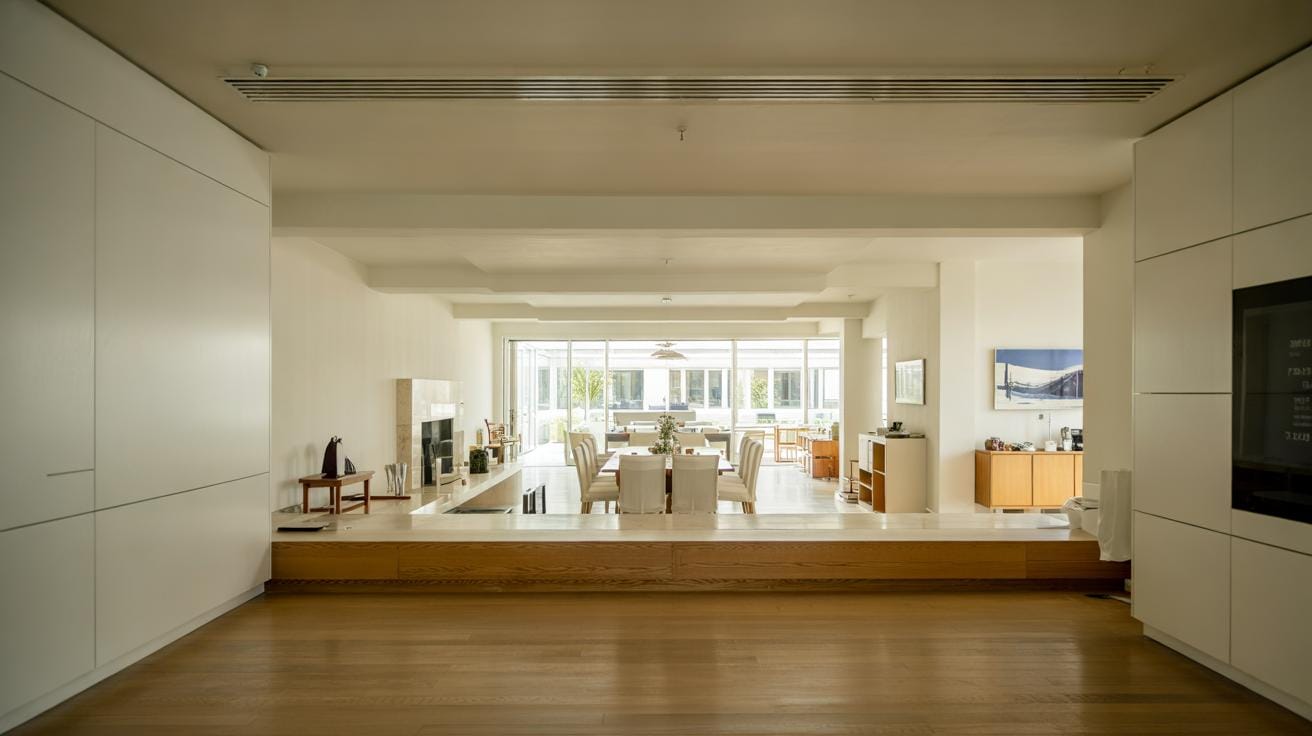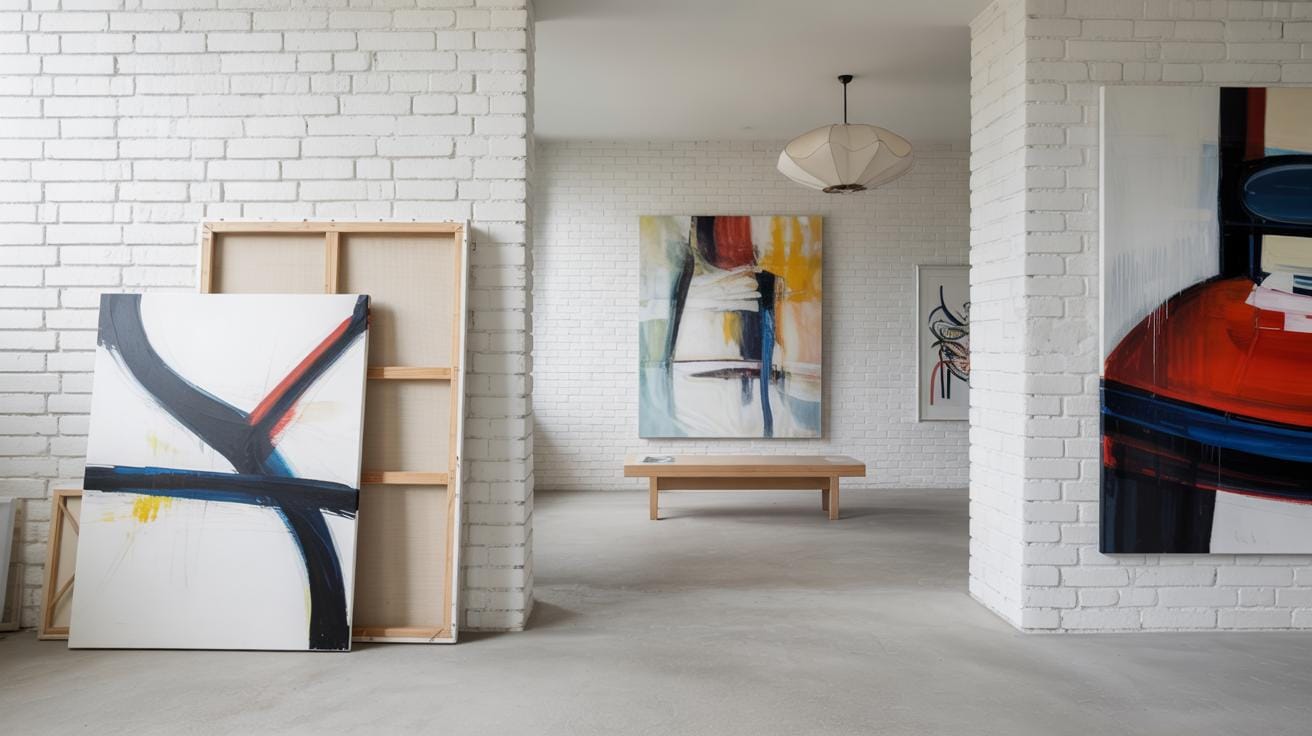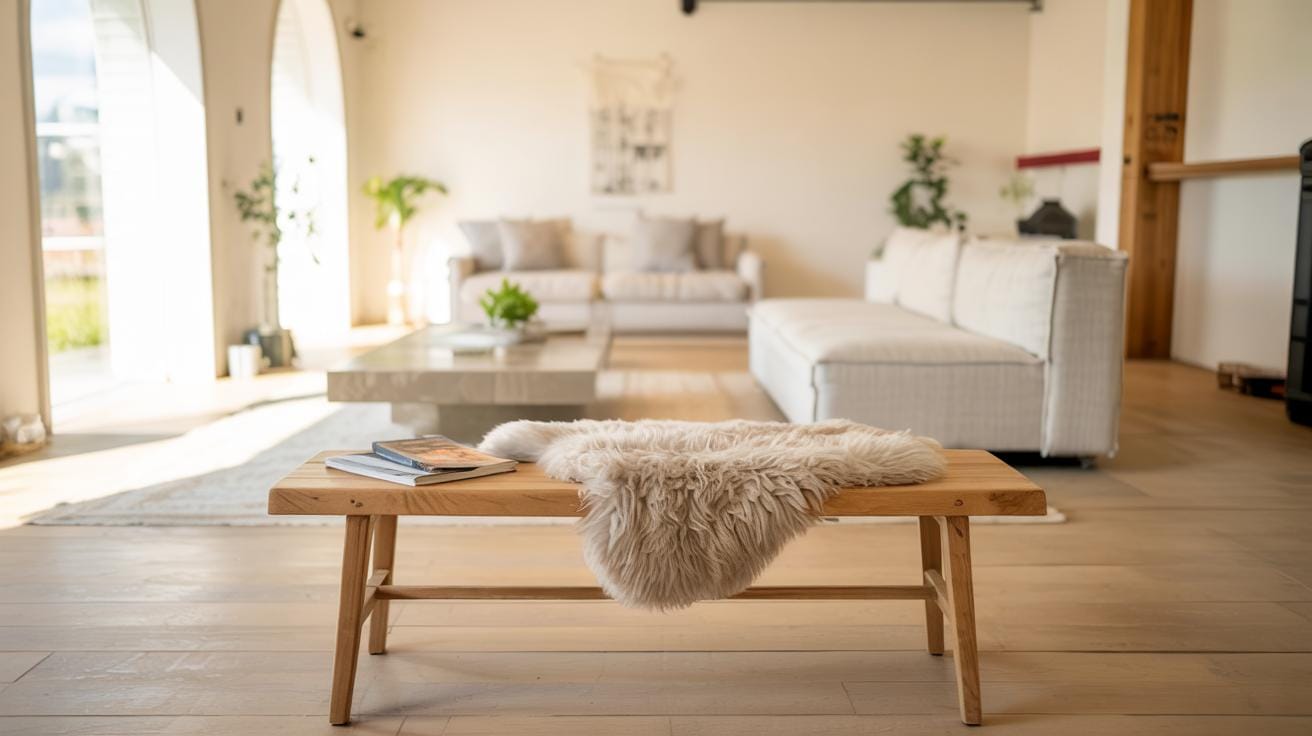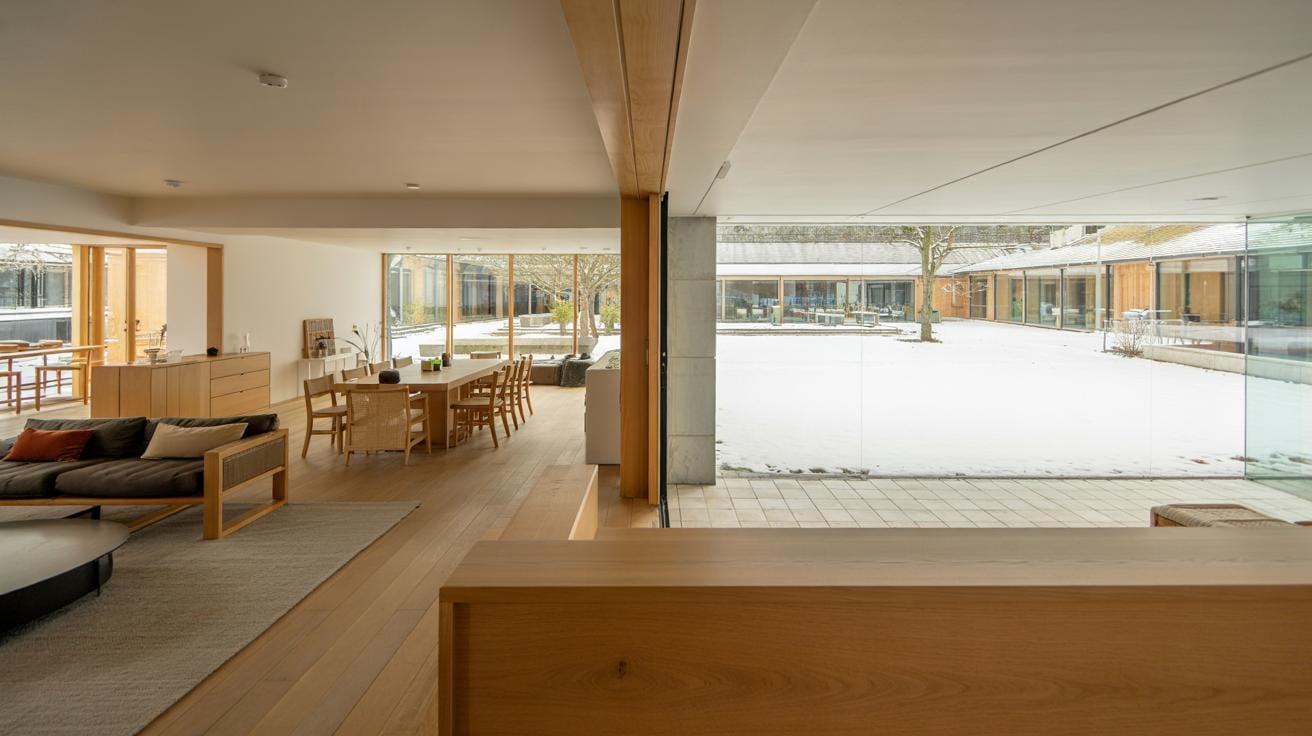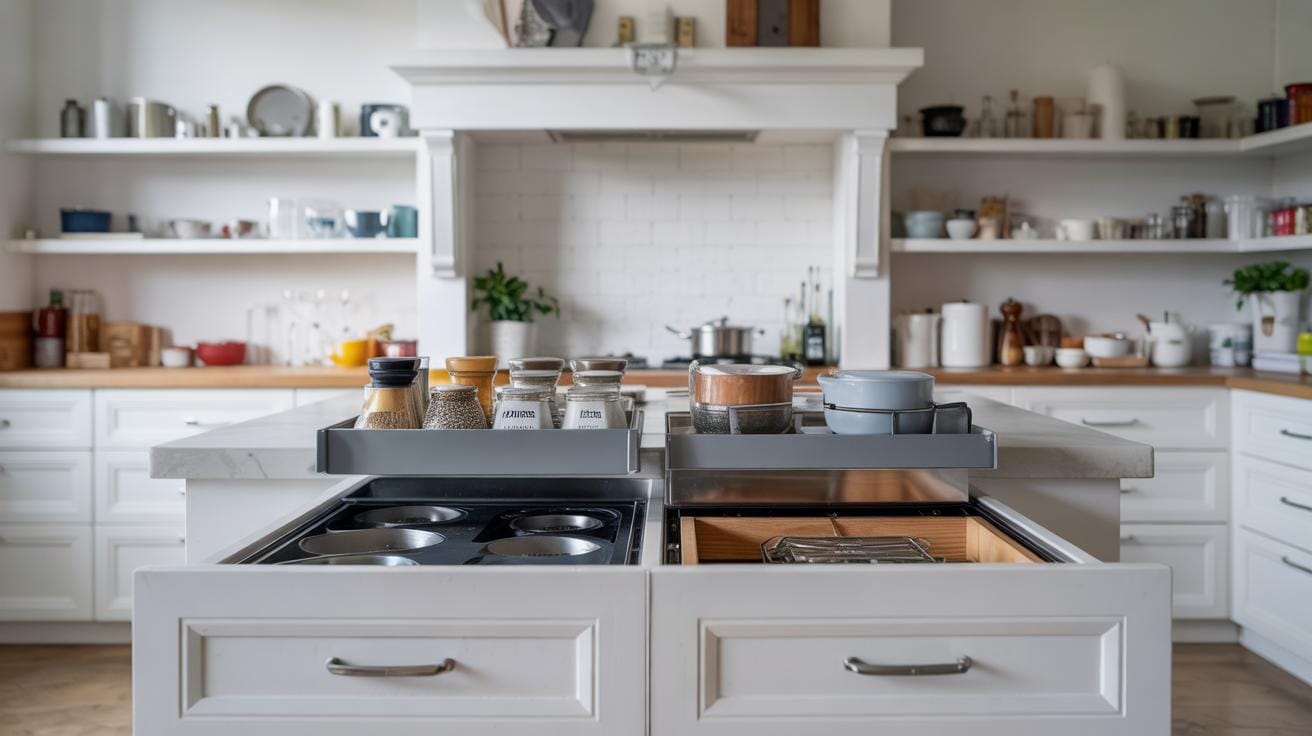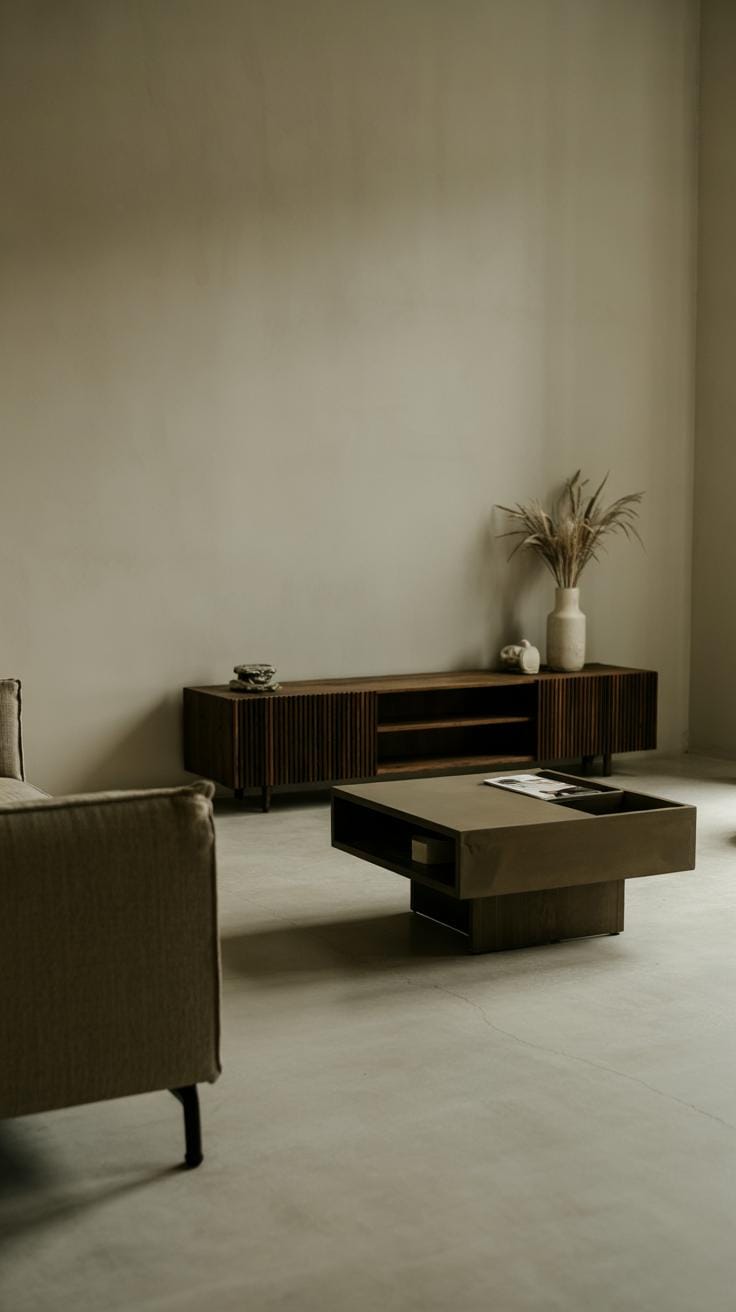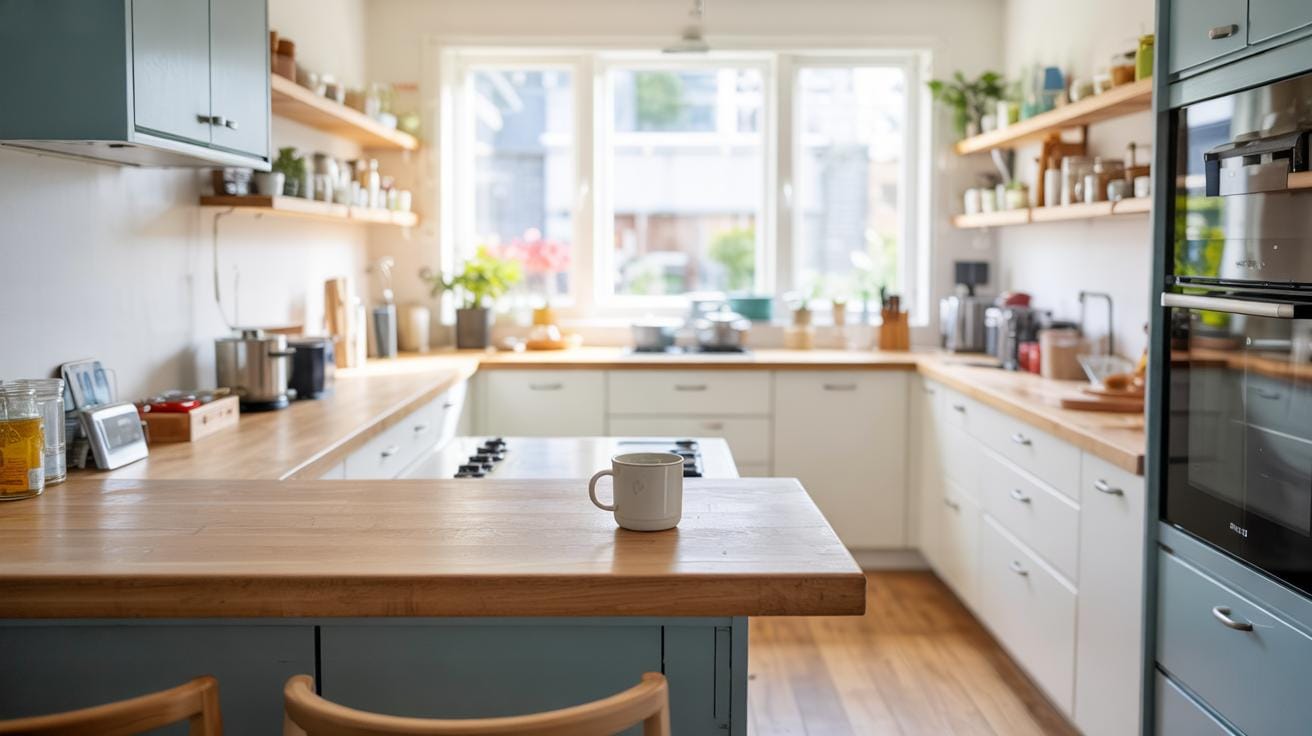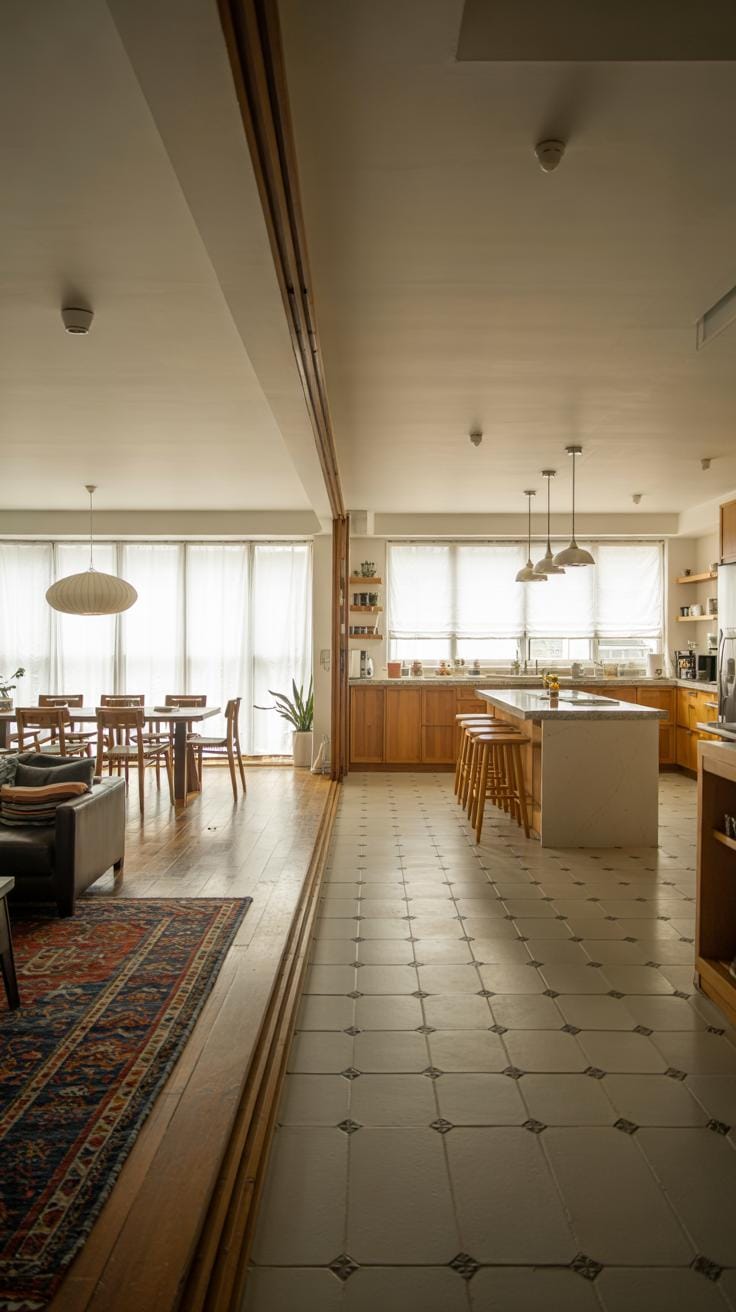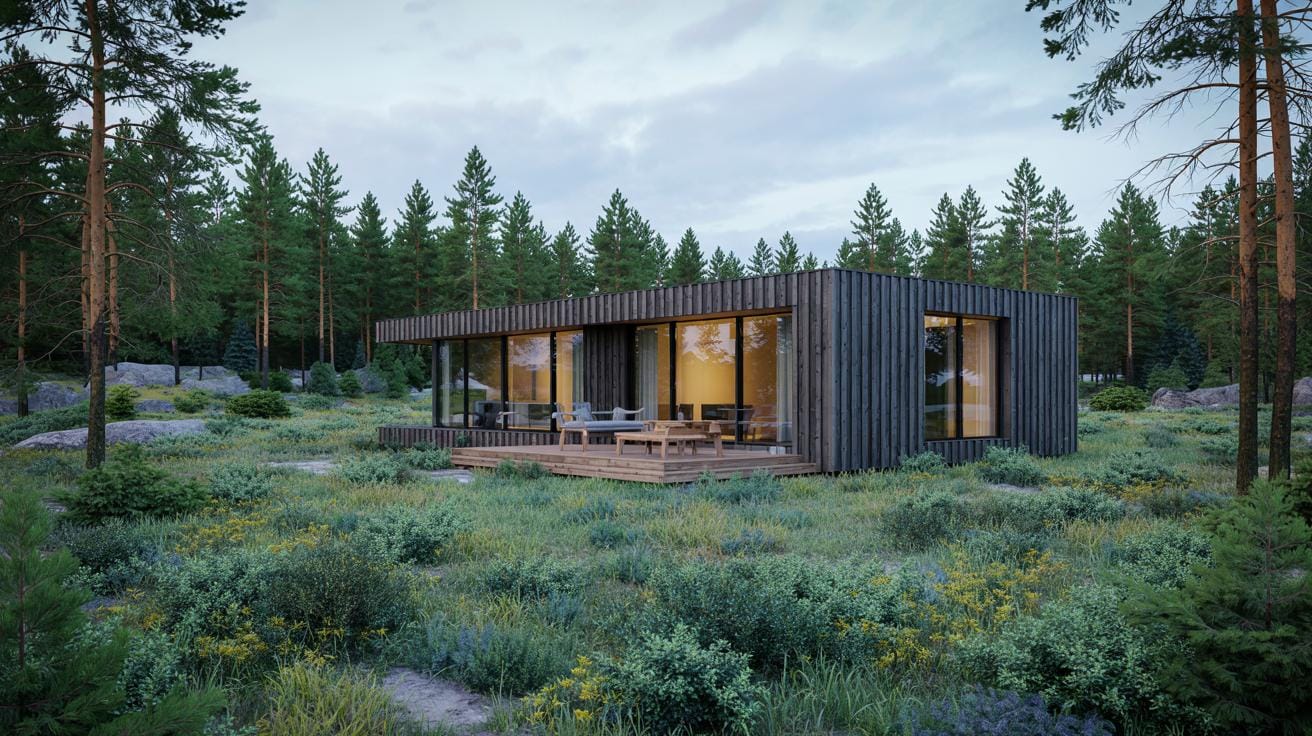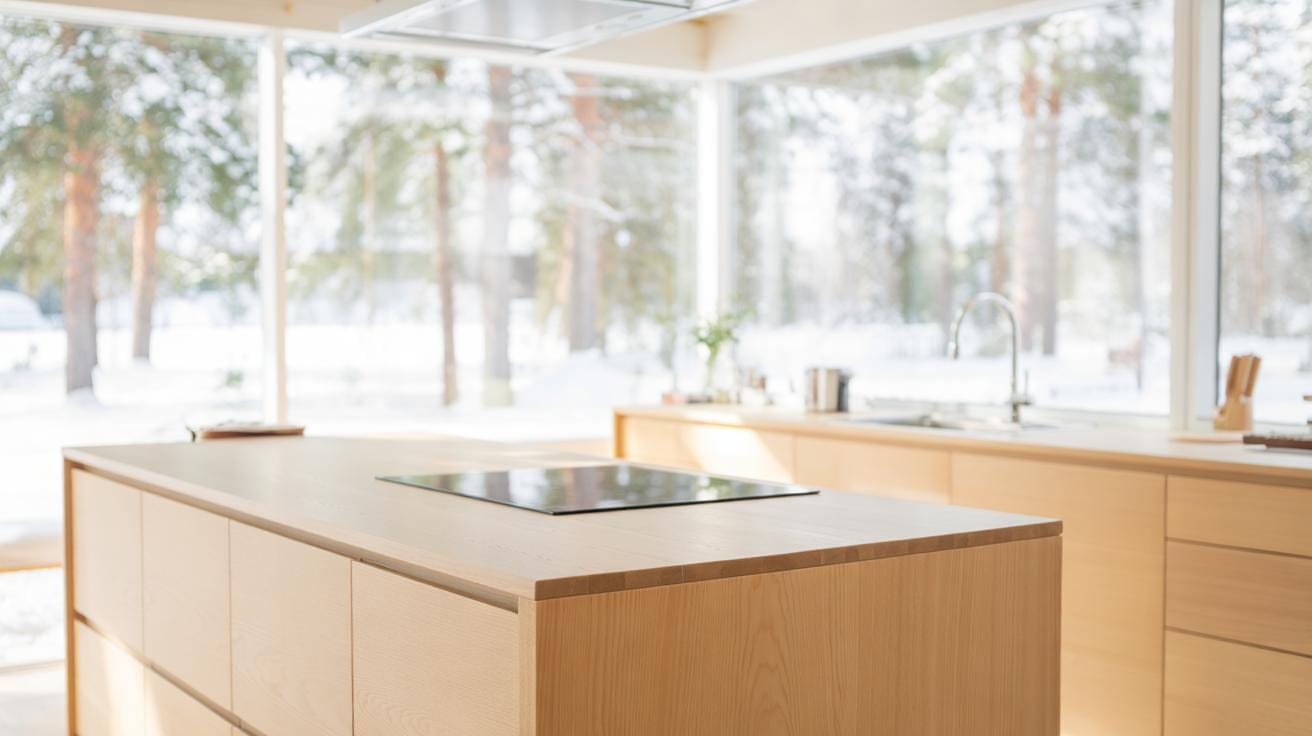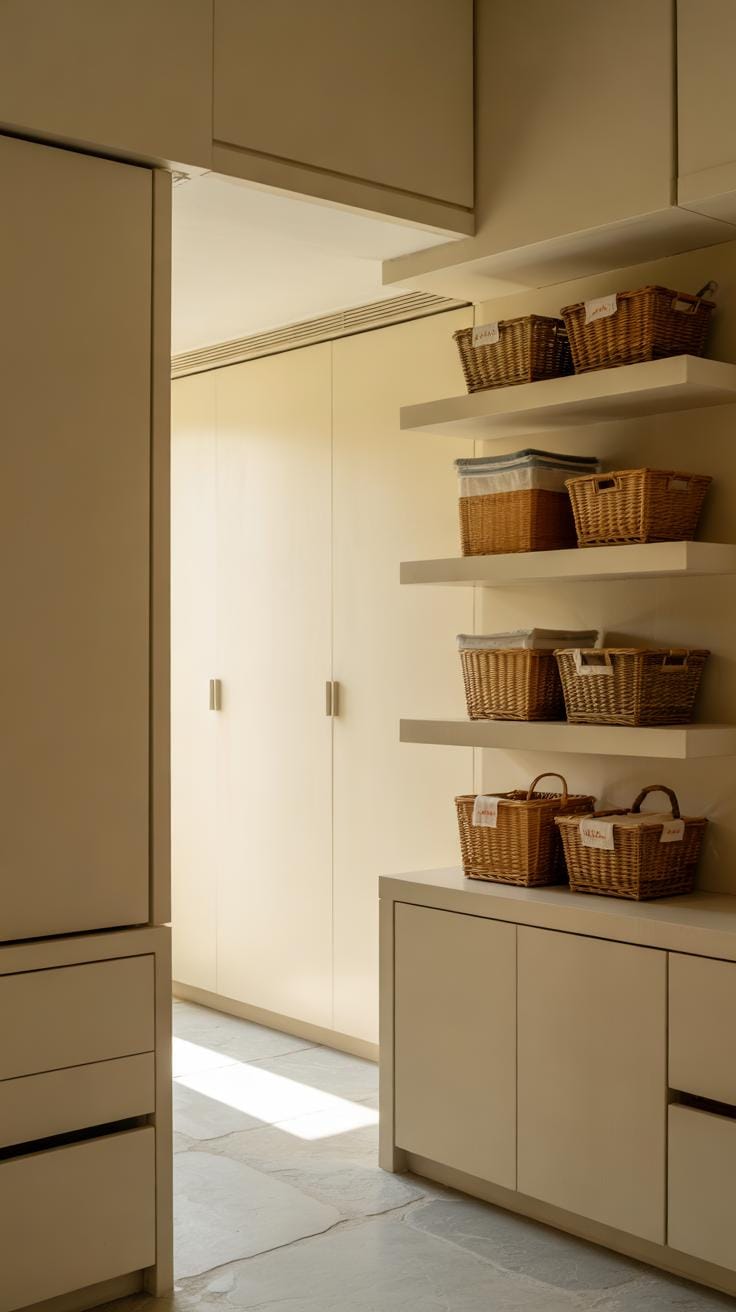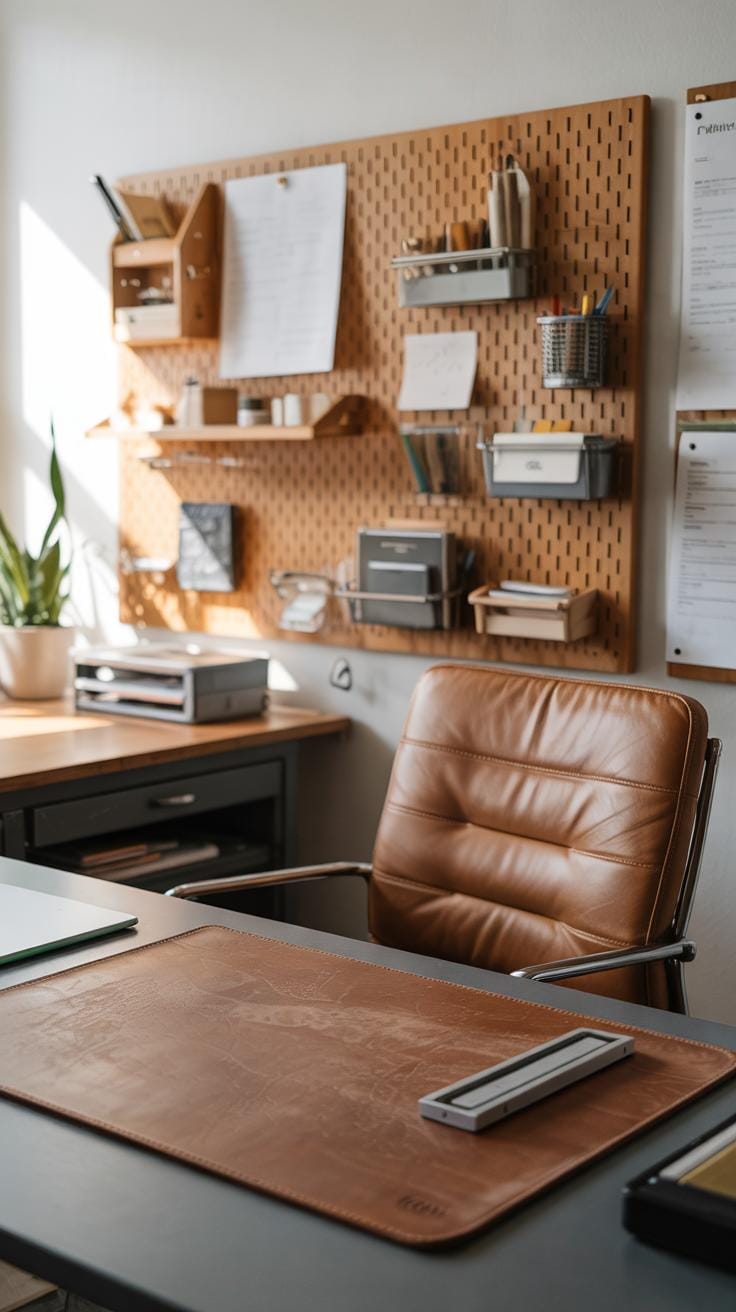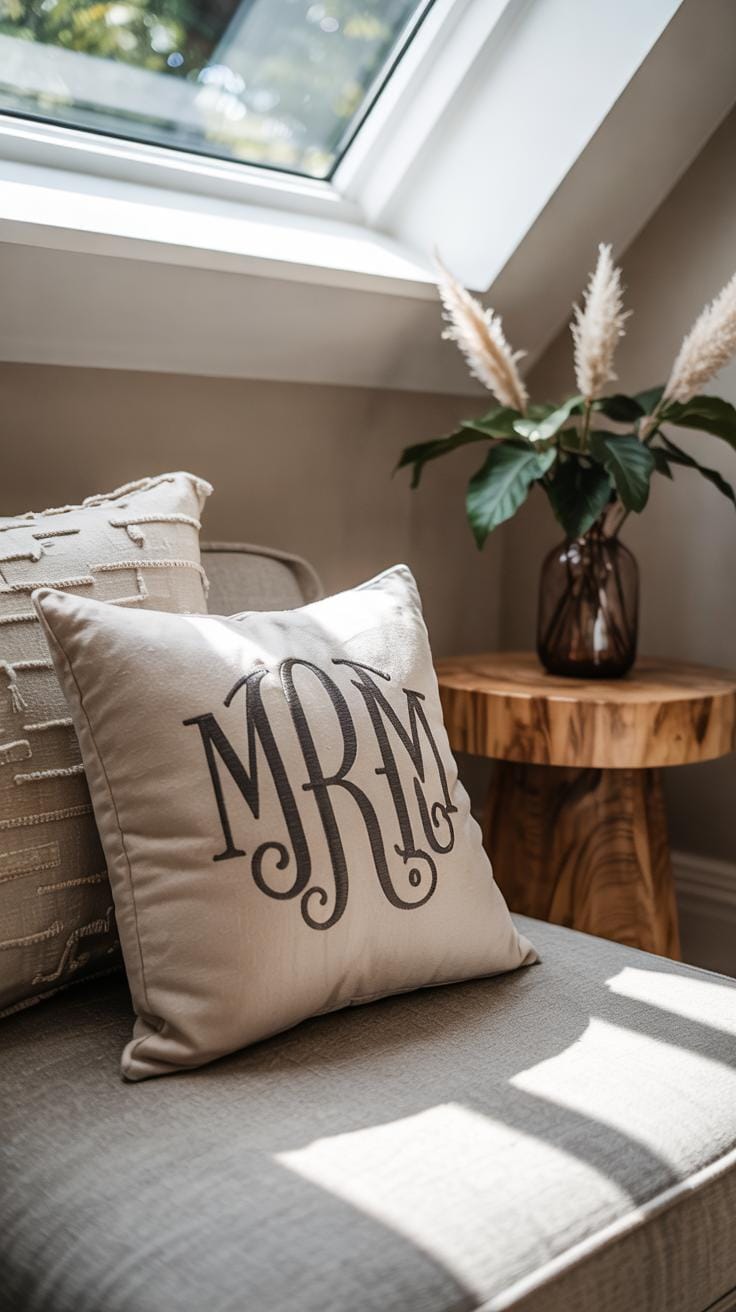Introduction
Scandinavian house design is popular for its clear focus on simplicity and functionality. This design style began in the early 20th century in countries like Denmark, Finland, Norway, Sweden, and Iceland. It rose to fame in the 1950s and is known for its minimalism and practical use of space. The Scandinavian style applies to furniture, textiles, lighting, and even the layout of homes. It aims to create homes that are comfortable, efficient, and appealing. If you are thinking of designing or renovating your home, understanding this style can help you make smart choices that last.
Key layout strategies in Scandinavian house design concentrate on making the most of natural light, using open plans, and choosing functional furniture. Designers focus on clean lines and fewer decorations to keep spaces feeling fresh and uncluttered. The goal is to blend beauty with usefulness, helping people live better in their homes. This article will explore these design principles and key layout techniques that create a harmonious living space. You will discover how to use these ideas in your own home.
Origins and Principles of Scandinavian Design
Historical Background
Scandinavian design began in the early 1900s across Nordic countries like Sweden, Denmark, Norway, and Finland.
In the 1930s and 1940s, designers such as Alvar Aalto from Finland and Arne Jacobsen from Denmark started shaping the style with simple but well-crafted furniture.
The movement gained worldwide attention after World War II, when these designs were shown at international fairs.
People valued the clean, functional approach during a time of rebuilding and change.
Do you know how a chair can balance form and function? Scandinavian designers proved it was possible—and their work still influences homes today.
Core Principles
Scandinavian design focuses on minimalism—keeping only what is necessary and useful in your space.
Natural light plays a major role, so arranging rooms to capture daylight improves mood and makes rooms feel bigger.
Furniture is designed to be functional, comfortable, and simple in shape, often made from natural materials like wood and leather.
This connection to nature encourages you to bring natural elements inside, such as plants or wood textures, to create a calm environment.
When considering your own space, ask how you can simplify your layout and invite more natural elements indoors.
Maximizing Natural Light in Your Home
Natural light plays a crucial role in Scandinavian house design. It brightens spaces and makes rooms feel larger and more inviting. Natural light also affects your mood, boosting energy and improving your well-being. When planning your home, think about how light moves through the rooms during the day.
You can increase natural light by using an open layout that avoids blocking windows with walls or heavy furniture. Creating clear sightlines allows daylight to reach deeper into your home. Skylights and glass doors also bring more sunlight inside. Consider how each space can capture sunlight at different times of the day to make your entire home feel lighter and more cheerful.
Window Placement and Size
Large windows are a hallmark of Scandinavian design. Placing wide windows along exterior walls fills rooms with daylight. North-facing windows provide soft, consistent light without harsh glare. South-facing windows catch sunshine for warmth and brightness.
Think about windows that extend close to the floor or ceiling. These designs connect you with nature and expand the visual space. Grouping windows or using corner windows can bring light from more than one direction, increasing brightness throughout the day.
Using Light Colors and Surfaces
Walls, ceilings, and floors painted in pale hues make natural light reflect better. White, soft gray, or light beige surfaces bounce sunlight around the room, brightening darker corners.
Matte finishes reduce glare while keeping light soft. Glossy floors or tiles can reflect light but choose them carefully to avoid harsh reflections. Light-colored wood floors add warmth without darkening the space. When selecting paint or flooring, consider how the colors will interact with the available light to keep rooms feeling fresh and open.
Choosing Functional and Minimalist Furniture
Furniture plays a key role in Scandinavian house design. It controls how your space feels and works. The style values pieces that are simple and useful. Choosing furniture that looks clean and helps you use space smartly makes daily life easier.
Think about items that can serve several jobs. A sofa bed or a storage ottoman saves space and adds convenience. You get extra storage or a place to sleep without overcrowding your room. This approach fits the practical values of Scandinavian design perfectly.
When picking furniture, focus on clean shapes without many details. Smooth surfaces and straight edges make a room feel calm and uncluttered. Avoid heavy decorations that distract from the room’s sense of order and light. Ask yourself if each piece fits your lifestyle and adds value in more than one way.
Multifunctional Pieces
Multifunctional furniture helps you make the most out of smaller spaces. Items like folding tables, extendable desks, or beds with drawers keep your home flexible. You can change the setup depending on your needs. This flexibility creates more room for daily activities.
Furniture with more than one use prevents clutter. It reduces the need for extra items. This strategy highlights how Scandinavian design saves space without losing style. Think about your habits and how each piece could support different actions throughout the day.
Clean Lines and Simple Designs
Furniture with clear shapes and minimal decoration reflects core Scandinavian ideas. Simple designs avoid distraction and keep the focus on function. Straight lines and soft curves create a balanced look that feels open and welcoming.
When shopping, choose pieces made from natural materials with smooth finishes. Light woods like birch or pine blend well and brighten your home. Ask if the design seems too busy or if it fits the calm, orderly feel you want. Clean lines help your furniture blend in, letting light and space shine.
Open Floor Plans to Enhance Space
Scandinavian house design often uses open floor plans to create airy, connected spaces. Removing unnecessary walls helps improve how rooms flow into one another. This approach makes smaller homes feel larger and less crowded.
When you look at open floor layouts, you notice how natural light travels freely across the space. Light has a way of brightening every corner, giving the home a fresh, inviting feel. Open spaces also encourage movement and interaction, making daily life feel more relaxed and connected.
Think about how you use your own home. Would opening up walls help you move more easily or spend more time with family and friends? Open floor plans break down barriers, so your space works better for your lifestyle.
Combining Living Areas
Scandinavian design blends kitchens, dining rooms, and living rooms into one open area. This setup creates a central hub where people can cook, eat, and relax together without barriers.
The open kitchen allows you to chat with guests while preparing meals. The dining and living areas share light and space, which makes the whole room feel fresh and cheerful. You can see everyone and everything clearly, which helps with social interaction.
Does your home separate these areas? Try imagining a merged space. How would that change the way you connect with others at home? Combining these rooms helps you make the most of each square foot.
Defining Spaces Without Walls
Instead of walls, Scandinavian homes define zones with rugs, furniture, or partial dividers. Placing a rug under a coffee table or dining area marks different spaces while keeping the openness intact.
Furniture arranged thoughtfully can create boundaries. A sofa facing away from the kitchen subtly separates the living space. Low shelves or screens offer partial division without blocking light or flow.
Consider your rooms now. Could furniture and rugs help define areas instead of new walls? These methods keep your home open yet organized. They allow freedom while giving every zone its own purpose.
Utilizing Natural Materials and Textures
Scandinavian homes rely heavily on natural materials to bring both function and style into everyday living spaces. Wood, stone, and wool appear throughout interiors to ground rooms in authenticity while keeping designs simple. These materials work together to create a calm environment that feels inviting without excessive decoration.
Wood adds structure and warmth to floors, walls, and furniture. Stone surfaces provide durability and a cool contrast. Wool and other natural textiles contribute softness and texture that break the monotony of smooth finishes. How can you combine these elements in your home to balance comfort and minimalism?
Using different textures in the same space lets you maintain simplicity while adding interest. The key is choosing natural products that age well and require little upkeep. Think about the impact of natural materials in your day-to-day life—how could they shape your living environment?
Wood and Stone in Interiors
Wood floors are a common feature in Scandinavian design because they wear well and feel natural underfoot. Light-colored woods like pine or birch brighten rooms while offering a clean look. Stone countertops in kitchens and bathrooms offer strength and easy maintenance, resisting scratches and stains.
Wooden furniture often focuses on craftsmanship and clean lines. Chairs, tables, and shelves made from solid wood add character without overcrowding the space. Are there parts of your home where wood or stone surfaces might replace synthetic options for long-lasting appeal?
Textiles for Comfort
Wool rugs bring warmth to cold floors and add a tactile layer that invites you to sit or relax. Linen curtains filter natural light softly, enhancing privacy without feeling heavy. Cotton cushions offer comfortable spots to rest and add subtle color or pattern within a simple palette.
Using textiles in natural fibers helps regulate indoor climate as well. Wool insulates, while linen and cotton allow rooms to breathe. Could swapping synthetic fabrics for natural ones improve your home’s comfort and connection to nature?
Effective Storage Solutions
Keeping a Scandinavian home tidy depends on smart storage that blends seamlessly with the room’s clean and minimal style. You need to think beyond traditional shelves and cabinets to keep clutter out of sight while maintaining simplicity. Built-in shelves offer perfect spots for books and personal items without breaking the room’s flow. Hidden storage, such as compartments behind panels or under staircases, helps free up space and keeps surfaces clear.
Multipurpose furniture plays a key role in making your home practical without overcrowding it. Choosing pieces that serve more than one function allows you to maximize every inch. Imagine a bench by the window that doubles as storage for blankets or a coffee table with drawers to stash magazines and remotes. How can your furniture serve your daily needs without adding clutter?
Built-in and Concealed Storage
Built-in cabinets fit perfectly into empty wall spaces, creating storage without interrupting the room’s lines. This approach helps avoid bulky furniture that can make spaces feel crowded. Concealed compartments hidden behind doors and drawers keep small items tucked away. This method preserves the calm, uncluttered look typical of Scandinavian design. You can maintain visual harmony while still having enough room for essentials. Have you noticed how built-in storage turns often-unused corners into useful spots?
Furniture with Storage
Furniture that holds storage underneath frees up valuable floor space. Benches with lids, beds with drawers underneath, and coffee tables with shelves help keep everyday objects organized and out of sight. This is especially useful in smaller rooms where every bit of storage counts. Such furniture lets you keep your home neat while adding comfortable, functional pieces. What items could you store every day in your bed or seating to maintain a clutter-free room?
Incorporating Greenery and Natural Elements
Plants for Freshness
You can use houseplants to bring life into your Scandinavian space while improving air quality. Plants like snake plants, pothos, and spider plants require little care and thrive indoors. These options add fresh green tones that contrast well against the clean lines and light colors typical in Scandinavian layouts.
Introducing texture through leaves and shapes gives your room a softer, more inviting feel. Placing plants near windows maximizes natural light exposure, supporting growth and maintaining their health. Growing your own small herb garden in the kitchen extends practicality while enhancing the environment.
Think about which plants suit your lifestyle and space size. Could a few green companions change the mood of your room? Their presence makes your home feel more vibrant without cluttering your design.
Natural Decor
Using natural items like smooth stones, branches, or handmade ceramics connects your space to nature in subtle ways. These pieces add organic shapes and materials that complement Scandinavian minimalism without overwhelming it.
Try displaying a small collection of rounded river stones in a shallow wooden bowl or arranging a few dried branches in a simple vase. Handmade ceramics offer unique textures and forms that bring warmth and a handcrafted touch. These decorations are easy to maintain and fit well in open shelves or side tables.
Ask yourself what natural elements you can find locally or create yourself. Incorporating these can soften clean edges while keeping with the room’s calm and uncluttered atmosphere. Simple choices like these tie your indoor environment to the outdoors, making the space feel more balanced and welcoming.
Balancing Aesthetics and Practicality
Scandinavian design combines clean beauty with everyday usefulness.
Each room serves a clear purpose without extra clutter. You see open spaces that feel inviting but remain easy to move through.
Simple shapes and muted colors create calmness while keeping the area functional. Furniture often hides storage, making rooms look tidy yet practical for daily needs.
For example, a dining table with drawers stores cutlery nearby. A sofa with built-in shelves saves space and keeps essentials within reach.
Have you thought about how the items you use most could be better organized? Scandinavian design encourages asking that question to improve your home’s flow.
Choosing Durable Materials
Materials must handle daily wear without losing style or strength.
Wood is common because it ages well and can be sanded to look new again. Pine and oak resist dents and scratches when properly cared for.
Textiles like wool and linen offer comfort while lasting long. They breathe, so fabrics don’t wear out quickly or fade.
Choose surfaces like matte finishes over glossy to hide fingerprints and smudges. This small decision keeps your home looking clean with less effort.
Which materials in your home would benefit from better durability? Picking wisely means less replacement and a steadier look over time.
Layout for Daily Life
Daily routines shape Scandinavian layouts for comfort and ease.
Spaces are arranged so that frequently used areas connect naturally. The kitchen sits close to the dining zone, limiting walking back and forth.
Hallways offer hooks and shelves near entrances to store coats and shoes quickly. This avoids mess and speeds up moving in and out.
Lighting is planned around tasks. Bright lights over workspaces and softer ones near relaxation spots create balance.
Imagine your day-to-day flow. Could your home’s layout cut down extra steps or make it easier to reach what you need?
Thinking through daily habits guides smarter design that feels right every morning and night.
Customizing Scandinavian Design for Your Home
Scandinavian design focuses on clean lines and simplicity, but you can shape it to fit your own life. Think about how much space you have and your daily routines when choosing furniture and layouts. Small rooms benefit from multi-use pieces like foldable tables or stackable chairs. Larger spaces let you add more seating or cozy reading nooks without cluttering the area.
Your lifestyle matters. If you work from home, design a minimalist but functional workspace with plenty of natural light. For families, choose durable furniture that still feels light and open. It’s about adapting the core ideas of openness, light, and calm to what you really need.
How can you keep the Scandinavian spirit alive while making your home uniquely yours? Start with flexible design that grows with your life and space. This way, your home stays both practical and welcoming.
Adaptation to Different Spaces
Smaller apartments require smart planning. Place furniture against walls to maximize open space. Consider open shelving to make rooms feel airier and hold just what you use daily. Single-family homes offer chances to separate areas for different activities, like clear zones for relaxing and eating.
Shared living spaces call for zones that respect privacy but still encourage connection. Think about using dividers or rugs to mark boundaries without closing off rooms. You can add storage that everyone can reach easily to keep clutter down.
Would your home look better with fewer but better-arranged items? Try rearranging before buying new pieces. This can help you see what really works for your type of living space.
Personalizing with Colors and Art
Scandinavian style uses mostly light, neutral colors, but adding subtle accents can make your space feel personal. Choose soft hues like dusty pinks, muted blues, or sage greens for cushions or throws. Small color pops draw interest without overwhelming the calm.
Art offers another way to show personality while keeping simplicity. Look for pieces with clean shapes or natural themes that match the room’s mood. Rotating art makes your walls fresh and lets you change the feel seasonally.
Ask yourself: which colors or patterns speak to you but don’t clutter your space? Finding this balance keeps your home peaceful and inviting while reflecting who you are.
Conclusions
Scandinavian house design stands out for its clear and practical approach to home layout. The emphasis on simplicity, natural light, and functional spaces helps you create a living area that feels open and inviting. Using natural materials and clean lines means your home will look timeless and stay easy to maintain. This style also encourages mindful decoration to avoid clutter and keep your space calm and focused. By applying these ideas, you can improve your home’s flow and comfort.
You can start small by rearranging furniture or choosing more practical pieces that fit your lifestyle. Look for ways to open up rooms and bring in more natural light, which enhances mood and visual space. Think about how each area in your home is used and plan the layout for ease and function. Scandinavian design is not just about looks – it is about making your home work better for you every day. What changes will you make to bring this style into your living space?

